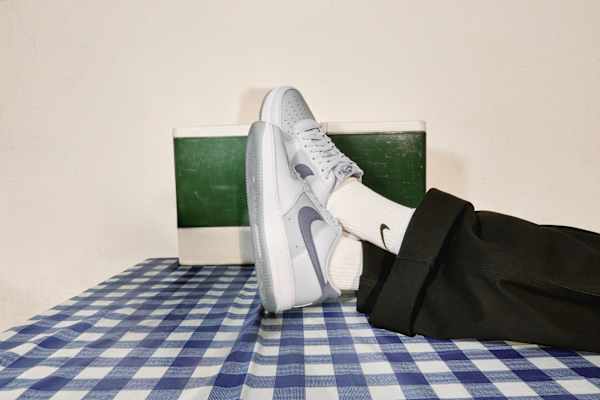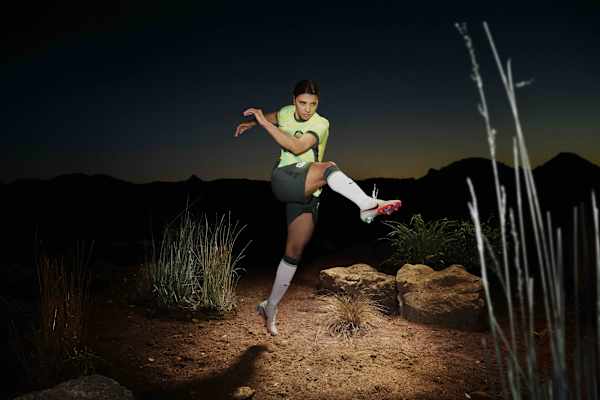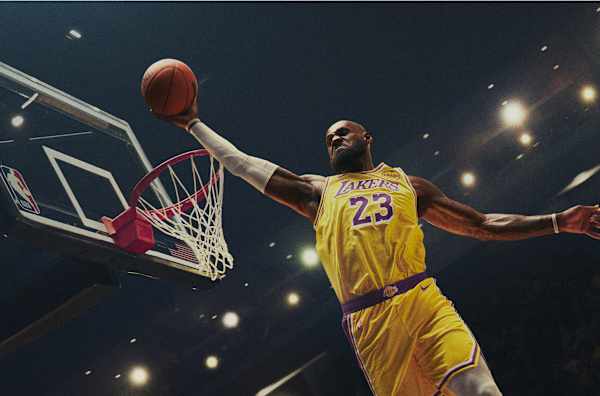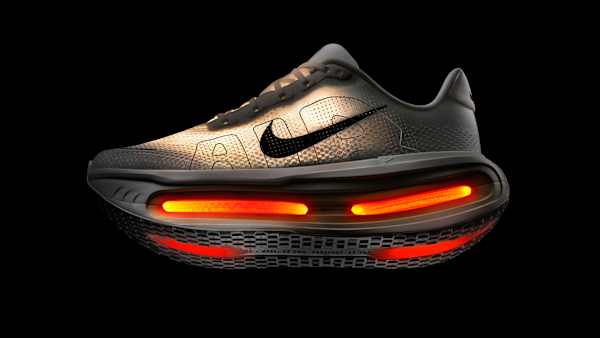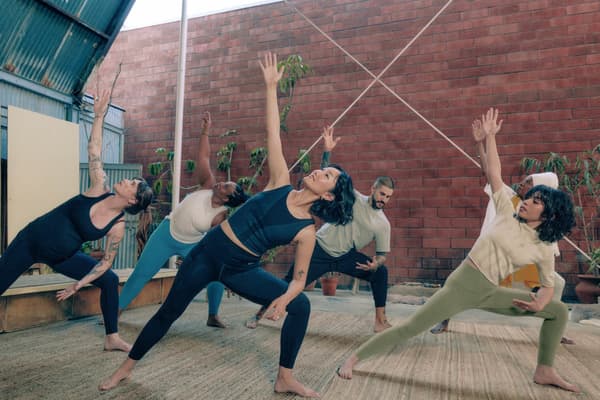How the Air Jordan 1 Banned Colorway Sparked a Sneaker Revolution
Nike DNA
The backstory of the Air Jordan 1's black & red colorway is just as legendary as the shoe itself, which is foundational to sneaker culture and remains one of the most popular of all time.
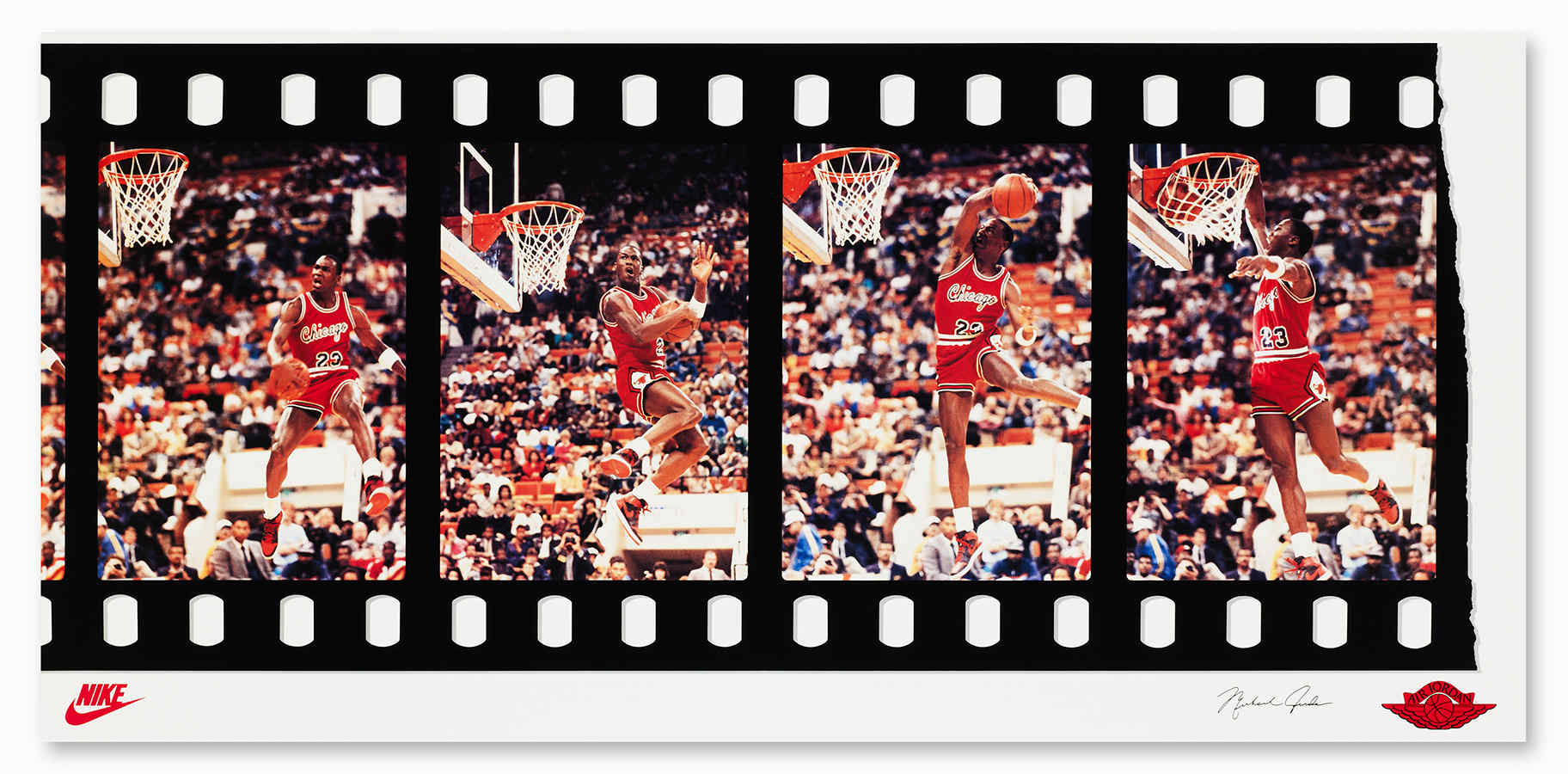
What You Need to Know
- During Michael Jordan’s rookie season, Nike turned a shoe controversy into a brand-defining campaign that fueled the future of sneaker culture.
- The debate rages on today over whether the Air Jordan 1 was ever truly banned, as the Nike Airship was the original outlawed shoe.
- Jordan’s style and defiance reshaped not just basketball, but culture, fashion and youth identity.
- The AJ1 High ’85 serves today as a faithful homage to the iconic Banned Colorway.
In the fall of 1984, long before Michael Jordan became a six-time league champion, he stepped onto the court with a pair of sneakers that broke the rules. The black-and-red Air Jordan 1, which later became known as the Banned Colorway, wasn’t just a shoe. It was a statement of greatness. And its debut marked the beginning of a sea change in basketball, fashion and pop culture.
History of the Banned Air Jordans
When Jordan first laced up the black-and-red sneakers, he wasn’t intentionally courting controversy. He was testing out a bold new shoe design in a pursuit of excellence. However, the league had a strict “uniformity of uniform” rule at the time, meaning sneakers had to comply with color restrictions while matching the shoes of the other players.
Being visually disruptive and different from every other shoe on the floor, the black-and-red Jordans violated that rule. Jordan wore them anyway, believing they matched both his personality and his game. His decision to continue breaking the rules became a symbolic declaration: He wasn’t there to fit in. He was there to change the game.
Jordan wore a few different AJ1 colorways throughout his sensational rookie year, igniting a cultural firestorm. Each time he laced up the black-and-reds, Nike stood behind him.
Editor’s Note: The following “DNA Remembers” excerpts derive from an internal research report first published by the Digital Nike Archives in October of 2014. Years later, they provide a glimpse into how the details surrounding the Banned Colorway Jordan shoe have changed over time.
Department of Nike Archives Remembers: October 14, 2014
With training camp only weeks away in September 1984, our designers didn’t have time to invent a new sneaker. We reworked existing tooling, recolored it in black, red and white, and added the “wings” logo. “It was really a color exercise more than anything,” said [then] VP of Brand Jordan Footwear Gentry Humphrey.
Separating Truth From Legend
The history of the Banned Colorway has taken on a mythic quality over the decades. The most famous retelling says that Jordan started wearing the black-and-red Air Jordan 1 in games, got fined $5,000 every time, and Nike happily paid the tab as a marketing cost.
The reality is a little more nuanced.
In fact, Jordan first wore a black-and-red, pre-Air Jordan sneaker called the Nike Airship during the 1984-85 preseason. That shoe was reportedly the first Nike sneaker that drew the attention of the league commissioner. After MJ turned heads wearing black-and-red AJ1s during the 1985 Slam Dunk Contest, the league escalated its enforcement. An official league letter dated February 25, 1985, cites Jordan’s sneakers for violating uniformity rules. Collectors often reference this document as the original paper trail of the ban.
When the shoes were later released to the public in April of that year, Nike embraced the controversy, launching an iconic ad campaign declaring the AJ1 had been outlawed by the powers that be.
The cold, hard truth? Jordan rotated a number of different shoes throughout his rookie campaign, including many that did not run afoul of league uniform rules. The Airship was technically the “illegal” shoe, but it was the renegade reputation of the first black-and-red Air Jordan 1s that captured the imagination of the basketball world.
What mattered wasn’t so much the fine print. It was the energy and attitude behind the sneakers. The taboo quality made them irresistible to fans and fashionistas alike. Nike helped turn an obscure uniform infraction into a launching pad for MJ’s superstardom and the nascent explosion of sneaker culture.
Department of Nike Archives Remembers: October 14, 2014
In October of 1984, after a preseason game at Madison Square Garden, [the commissioner] personally objected to Jordan’s black-and-red sneakers and demanded the shoes match [Chicago’s] colors more closely. Even Chicago’s front office reportedly worried the flashy look might put too much pressure on their rookie.
Nike’s Role
The NBA’s official rule in those days stipulated that shoes had to be at least 51% white and match the team’s color scheme. The black-and-red AJ1s were only seen on the court in two preseason games and the ‘85 Slam Dunk Contest in Indianapolis, where Jordan finished runner-up.
For most rookies, the flagrant use of unauthorized shoes on such a big stage would have been a problem. But Jordan was no ordinary rookie, and Nike recognized the moment as a generational opportunity, framing each game as another rebellious chapter in a story bigger than basketball.
Jordan — and Nike — were rewriting the rules.
Department of Nike Archives Remembers: October 14, 2014
Nike executives saw the [threat of] fines as a marketing gift. When told the bill might be $1,000 per game, Nike VP Rob Strasser’s response was, “Great! Just cut the [league] a check for $82,000.” (The season is 82 games long.) Nike then shot its first Jordan commercial within a week, showing the black-and-red shoes blacked out by bars with the line: “The [league] threw them out of the game. Fortunately, the [league] can’t stop you from wearing them.” That single ad helped sell 50,000 pairs almost immediately.
The Colorway
The Banned Colorway featured a bold combination of black leather uppers with red foxing, collars, and vamp over a white midsole, and of course, a signature red Swoosh. It stood in stark contrast to the league’s then-standard palette of white-dominant sneakers with minimal team accents. The black-and-reds brought a look that was unapologetically nonconforming, unapologetically Jordan.
As the legend grew, Jordan began shifting more toward the Chicago colorway with its white leather base, red overlays and black accents (including a black Swoosh). The Chicago design maintained a strong sense of the team's identity while satisfying league regulations. It was more acceptable on court, yet still striking to the eye. This adjustment allowed MJ to keep his signature look while letting the controversy fade into the background. Of course, by this time, the story had already woven its magic and become a part of basketball and streetwear lore.
[Related: Air Jordan 1 Chicago: The Inspiration Behind the Design]
Jordan’s Accomplishments in the AJ1
Jordan wore the black, red, and white sneakers during his rookie season, in which he introduced himself as the future of basketball. That year, he averaged 28.2 points per game, 6.5 rebounds and 5.9 assists while turning Chicago into a playoff team. He was named a starter on the All-Star team and captured the NBA Rookie of the Year award. All told, he scored 2,313 points that season, the most by a rookie since Kareem Abdul-Jabbar.
There were a number of unforgettable moments, too. Explosive dunks, clutch jumpers and highlight after highlight made “Air Jordan” a household name. The story of the Banned Colorway shoes added a new layer to the legend.
The aftermath? The sneakers sold out. And the foundation was laid for a sneaker empire that has reshaped sport and culture for four decades and counting.
Jordan’s Rookie Year Statistics
- Points per game: 28.2
- Rebounds: 6.5
- Assists: 5.9
- Steals: 2.4
- Minutes per game: 38.3
Jordan’s Rookie Year Historic Moments
- October 5, 1984: Jordan’s NBA debut vs. the Indiana Pacers in a preseason game.
- October 9, 1984: Jordan wears the black-and-red Airship for the first time in a preseason game vs. the Milwaukee Bucks. Few people took notice, as it was held at a high school.
- October 18, 1984: Jordan again wore the black-and-red Airship, this time in a preseason game at Madison Square Garden that ultimately became infamous.
- November 17, 1984: Jordan wears the first Air Jordan 1 (in the Chicago colorway) in a regular-season game vs. Dr. J and Philadelphia.
- February 9, 1985: Wearing the Banned Colorway AJ1s, Jordan dazzles the crowd in an epic Slam Dunk Contest battle with Dominique Wilkins.
- February 12, 1985: Scored a season-high 49 points against Detroit.
- April 1985: MJ’s Rookie of the Year season is capped by Chicago’s first playoff berth in four seasons.
Department of Nike Archives Remembers: October 14, 2014
According to Nike DNA archives, Jordan alternated between white/red AJ1s with black swooshes for away games, white/red with red swooshes for home games, and the Airship on a few other occasions. But it was the Slam Dunk Contest where the Banned Colorway stole the spotlight. Every commentator noticed, and even [the commissioner] reportedly said to Nike: “My son thinks l'm an asshole for the ban, so could you get me a pair of those shoes?” We couldn’t have scripted it any better.
Jordan’s Impact on Sneaker Culture
Jordan didn’t just break scoring records. He broke the mold of what a global basketball phenom could be. His dominance on the court, paired with Nike’s performance-enhancing fashion, transformed sneakers from simple hoops gear into cultural currency.
Streetwear, hip-hop and youth culture absorbed Air Jordans as symbols of identity, aspiration and defiance against the old guard, forming the foundation of modern sneaker culture. The Banned Colorway era introduced the world to a new formula: athlete + innovation + controversy = paradigm shift.
By turning a simple uniform violation into sports and pop culture headlines, Jordan and Nike wrote the first playbook for generating sneaker hype. Every high-heat sneaker drop can trace its roots back to that moment.
Lasting Legacy on Basketball and Beyond
Jordan’s transition from the Banned Colorway sneakers to the Chicago colorway reflected another stroke of genius. The Chicago AJ1s became just as iconic as the outlawed version, giving Jordan a compliant weapon on the hardwood while handing Nike another cultural touchstone. That shift opened the floodgates, giving way to new colorway variants, the Air Jordan 2, and a frenzy of sneakerheads chasing every drop. The era of plain white sneakers was dead.
The daring Nike-Jordan partnership inspired a generation of NBA players, and the ensuing decades introduced the world to bold sneakers worn by newly minted Nike stars like Charles Barkley and Penny Hardaway and, later, Kobe Bryant and LeBron James. The Air Jordan line proved that an athlete’s shoe could leave a legacy.
Once rigid on uniform rules, the NBA eventually loosened its stance, paving the way for today’s neons, retro tributes and mismatched pairs. The Banned Colorway sneakers were the catalyst. They turned Jordan from rookie to rebel, Nike from provocateur to powerhouse, and sneakers from gear to global icons. The NBA couldn’t ban greatness, and every time someone laces up a pair of Jordans, the legend of the Banned Colorway lives on.
From Controversy to Craft
Today, Nike is revisiting the Banned Colorway story with painstaking recreations, most notably the Air Jordan 1 High ’85. Designers reverse-engineered the original 1985 silhouette, tweaking collar height, toe box shape and Swoosh proportions to mirror the first run. Premium leather was sourced to replicate the stiffness and grain of the original, with stitching density and panel cutting matched stitch for stitch.
For collectors, these reissues aren’t just shoes. They’re artifacts that carry the memory and myth of Jordan’s defiance. Nike celebrates October 18 as Banned Day, marking the moment when Jordan first stepped foot on an NBA court wearing outlawed sneakers. This date serves as a yearly reminder that a shoe once forbidden on the court became the foundation of a movement.
FAQ: The Banned Air Jordan 1 Story
Why did the NBA ban the Nike Air Jordan 1?
The black-and-red Air Jordan 1 (and the Airship he wore before it) didn’t meet the league’s “uniformity of uniform” rule. Shoes had to be mostly white and match teammates’ pairs. Jordan’s sneakers were too bold, too different.
Which shoe was actually banned?
Technically, the black-and-red Nike Airship, a pre-Air Jordan sneaker with a similar look, was the shoe that drew the league’s ire during the 1984 preseason. But when the Air Jordan 1 launched in 1985, Nike embraced the story and blurred the lines, cementing the AJ1’s Banned Colorway status in sneaker lore.
